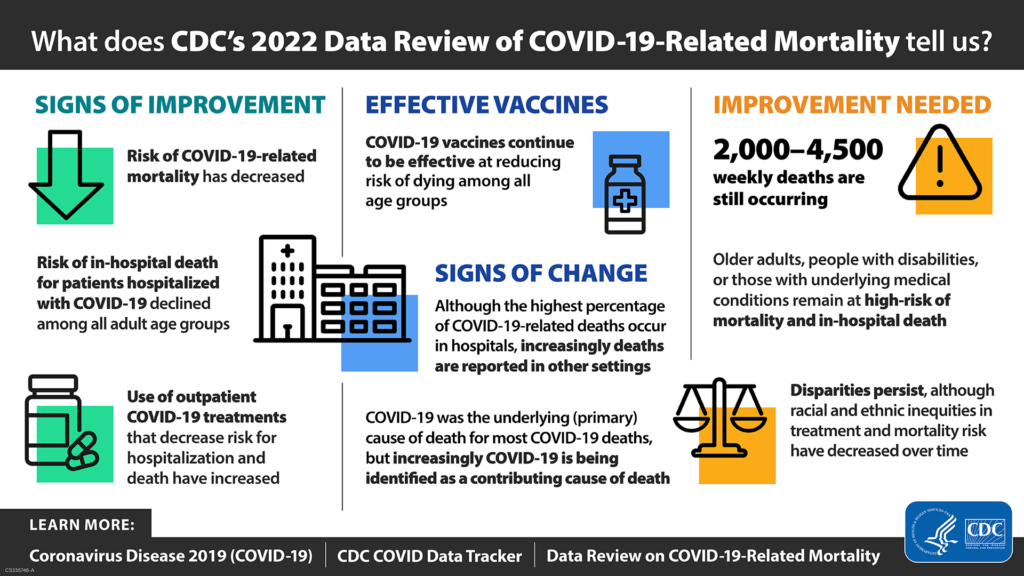Thursday Miscellany

From the Federal Employees Benefit Open Season front, Tammy Flanagan, writing in Govexec, explains the relationship between FEHB and Medicare coverage for the benefit of annuitants over age 65.
From the OPM front, Govexec and Federal News Network discuss an OPM management report released yesterday that includes more details on OPM’s 2022 Federal Employee Viewpoint Survey.
From Capitol Hill, Medpage Today informs us that “Telehealth, Mental Health Likely Topics for the New Congress in 2023, Experts Say.” In this regard, today the bipartisan leadership of the Senate Finance Committee “released a [fifth and final mental health parity] discussion draft including policies aimed at improving mental health parity in Medicare and Medicaid and helping to put access to mental health and substance use disorder (SUD) services on par with physical health care. Mental health parity includes a set of laws aimed at ensuring mental and physical health care are covered equally by health insurance. * * * The full text of the discussion draft is available here. A summary of all provisions released by the committee as a part of the bipartisan mental health effort, including mental health parity, is available here.”
From the Omicron and siblings front —
Beckers Hospital Review reports
COVID-19 hospitalizations have ticked up nationwide in recent weeks amid concerns of a potential winter surge, according to data tracked by The New York Times.
As of Nov. 29, the nation’s daily hospitalization average was 31,125, up 12 percent over the last 14 days. This figure is still down significantly from the more than 800,000 daily hospitalizations recorded during the peak of last winter’s omicron surge.
MedPage Today informs us
People with acute respiratory illness during the pandemic suffered similar levels of poor well-being in the months afterward whether they tested positive for SARS-CoV-2 or not, a registry study showed.
In a cohort of people who all had initial symptoms suggestive of COVID-19, those who had moderate to severe scores at 3 months on the pain, mood, and other quality-of-life measures on the Patient-Reported Outcomes Measurement Information System (PROMIS) scale were actually less likely to have tested positive for the coronavirus as to have had other causes of illness (39.6% vs 53.5%, P<0.001).
From the public health front —
MedPage Today explains how patients can try to distinguish among different respiratory illnesses, including RSV and the flu because at home testing is unavailable.
Politico Pulse reports
The Biden administration looks to end its public health emergency declaration for mpox — the virus formerly known as monkeypox until recently — a sign that officials believe they’ve brought the unprecedented outbreak under control, POLITICO’s Adam Cancryn reports.
Health officials are likely to issue a 60-day notice later this week for winding down the declaration, two people with knowledge of the matter told POLITICO, putting it on track to expire by Jan. 31. The decision isn’t yet final and could still change, the people cautioned. * * *
Some administration officials see the potential unwinding of the mpox emergency declaration as a test run for eventually ending the yearslong Covid emergency — a more complex challenge — that Biden aides expect to happen at some point next year.
From the Affordable Care Act and No Surprises Act front
The American Hospital Association (“AHA”) informs us
The Centers for Medicare & Medicaid Services seeks public input on topics related to essential health benefits — items and services that all non-grandfathered health plans in the individual and small group markets must cover under the Affordable Care Act. The agency is requesting feedback on how essential health benefits may need to be updated to reflect changes in medical evidence and scientific advancement, address gaps in coverage and health equity, or remove barriers to accessing services. In particular, CMS seeks feedback on essential health benefits related to maternal health, behavioral health and prescription drug coverage. The agency will publish the request for information in the Dec. 2 Federal Register, with comments accepted for 60 days.
and
AHA today urged the Centers for Medicare & Medicaid Services not to establish a national directory of health care providers and services (NDH) at this time.
“The AHA shares CMS’ goals to improve patient access to provider information and to facilitate health information exchange and data reporting,” the association wrote. “We appreciate the commitment CMS has invested in striving to meet these objectives. However, we are concerned that adding one more provider directory requirement will not support patients in accessing the information they need about their care providers. In fact, adding an additional data source without sufficiently addressing how or why it differs from the myriad provider directories already in existence could further complicate patients’ ability to access accurate information. Meanwhile, such a requirement would add considerable, duplicative burden on providers. Additionally, we have significant reservations about the current state of readiness of the essential technology needed for a centralized data hub such as the NDH.”
Mercer Consulting offers insights on the prescription drug and healthcare spending reports that health plans must submit to the federal government by December 27. Jingle bells.
Healthcare Dive reports that the Texas Medical Association has filed another lawsuit challenging different aspect of the independent dispute resolution rule. Haven’t the TMA lawyers heard about the opportunity available under the Federal Rules of Civil Procedure to amend their existing complaint?
From the Rx coverage front —
STAT News relates
The Food and Drug Administration approved the first therapy using bacteria from stool samples to treat a bowel disorder on Wednesday, paving the way for several similar treatments in development.
The drug, called Rebyota, is given as a one-dose treatment for Clostridium difficile infections, commonly known as C. diff., in which the toxin-producing bacteria disrupts the normal balance in a person’s digestive system. Rebyota is designed to restore balance by introducing good bacteria taken from donor stool samples.
“We are delighted that FDA has approved the first fecal microbiome restoration therapy for recurrent C. diff. This is an enormous step forward for the nearly 200,000 people who battle rCDI each year,” said Christian John Lillis, the executive director of the C. diff advocacy organization the Peggy Lillis Foundation.
Amgen released detailed data on Thursday suggesting an early-stage drug can induce significant weight loss in patients with obesity, with less frequent dosing than current treatments but a safety profile that remains unclear.
The results for the molecule, codenamed AMG133, throw Amgen in a long-gestating race with other major drugmakers that burst into the popular press this year.
Eli Lilly and the diabetes giant Novo Nordisk both market drugs that were recentlyshown to lower body weight by around 15% to 20% after a little over a year. (Lilly’s is currently approved only for diabetes, but it plans to submit for obesity next year.) The injectables have been highly sought after by both obesity specialist physicians, who have long searched in vain for something safe and effective to offer their patients, and celebrities hoping to look svelte in their next appearance.
From the miscellany department —
Beckers Hospital Review interviews a Kaiser Permanente expert about their successful use of remotely monitoring patients with diabetes and high blood pressure. The monitors deliver their results to Kaiser Permanente’s electronic health records for 40,000 members. Kudos.
Beckers also lets us know about large hospital systems that are having a profitable 2022.
STAT News reports
Elon Musk’s brain-machine interface company Neuralink aims to put its first implant in a human subject in the next six months, he said during an event Wednesday.
Musk said the company has been “working hard to be ready for our first human,” and has submitted most of the required paperwork to the Food and Drug Administration to launch a study in humans. The company — which is designing a device to translate the brain’s signals into actions — also announced it will first focus specifically on two applications: restoring human vision, and helping people who can’t move their muscles to control devices like smartphones or even return the ability to move to people with severed spinal cords, Musk said.
Though it’s starting with certain parts of the brain, Musk said Neuralink’s long-term goal is to create a system that can translate impulses from the entire brain into actions.







